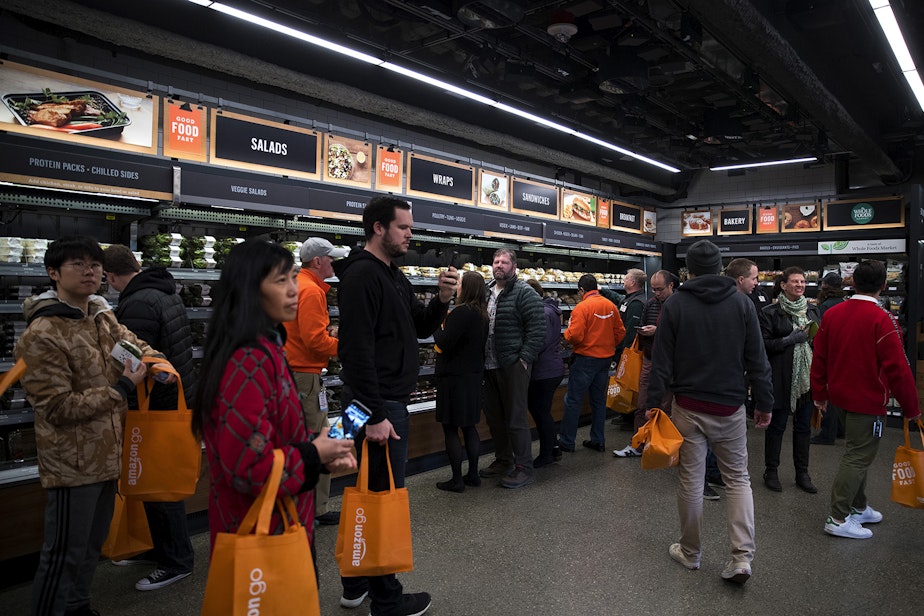Is Amazon's 'Just Walk Out' technology powered by AI or by hundreds of underpaid workers in India?

The world’s first Amazon Go store in Seattle opened on Jan. 22, 2018. The New York Times called it “A Store of the Future,” where all customers had to do was pop an item in their cart and walk out.
A little over six years in the future, developers for Amazon's “Just Walk Out” technology are facing layoffs, and the technology itself is being fazed out at 40 Amazon Fresh grocery stores.
This week headlines around the country have been saying that the marvel that is Amazon’s “Just Walk Out” technology, which was touted as AI-powered shopping of the future, was less impressive than initially thought. According to some sources, transactions were actually being verified by a team of 1,000 workers in India, who confirmed sales through a camera feed as customers walked out the store.
Amazon has disputed those claims, calling them "misleading and inaccurate." The company said human verification was used after the initial point of sale in-store, and that workers were only training the AI for accuracy.
The reality is somewhere in the middle.
"The reality is that just walk out was an interesting and advanced technology, but ultimately still required a lot of people in India to input the training data to help it recognize what you're picking," said Theo Wayt, who covers Amazon and broke the story for The Information.
If the technology is working as intended, cameras at an Amazon Go or Fresh store would register the item you picked up and charge it to a customer's account as they left. Oftentimes, however, customers would get receipts hours after they left the store. The delay resulted from a reviewer double checking the camera footage to verify the transaction.
Sponsored
Wayt reported that in 2022, there were 700 reviews per 1,000 transactions, but those reviews could also include someone picking up an item and setting it back down.
"But the point overall is that there were far more reviews happening than Amazon would have liked," he said.
Amazon recently confirmed it's laying off U.S.-based staffers working on installing "Just Walk Out" in new stores and supporting the technology on the back end. The company will still use the technology in smaller third-party stores and in 40 Amazon Fresh grocery stores.
The practice of paying cheaper labor elsewhere to do menial tasks — like training AI or moderating content — is common in the tech industry, especially with startups that rely on showy technology to secure venture capital funding.
"Usually human labor that is outsourced to other countries, because those are places where they can get access to labor in places with lower prevailing wages," said Benjamin Shestakofsky, a professor of sociology at the University of Pennsylvania and the author of “Behind the Startup: How Venture Capital Shapes Work, Innovation, and Inequality.”
Sponsored
Shestakofsky added that obfuscating human labor can boost the valuation of a company and convince investors of powerful Artificial Intelligence with low overhead.
That's a benefit for the company, he says, at the expense of the workers.
"If you make that work invisible, it actually helps to devalue that labor," Shestakofsky said. "So, if nobody knows that those workers are there, it's easier for companies to get away with paying the lowest possible wages."
Listen to the full Soundside segment with Theo Wayt and Ben Shestakofsky by clicking "play" on the audio icon at the top of this story.





